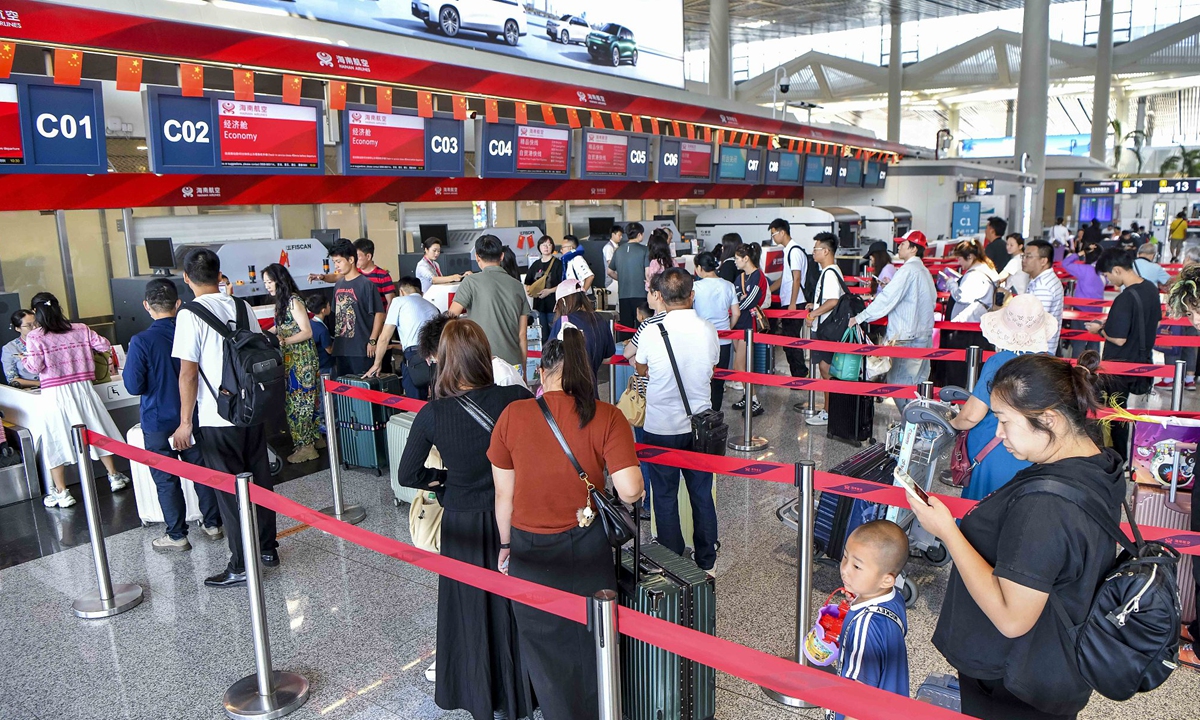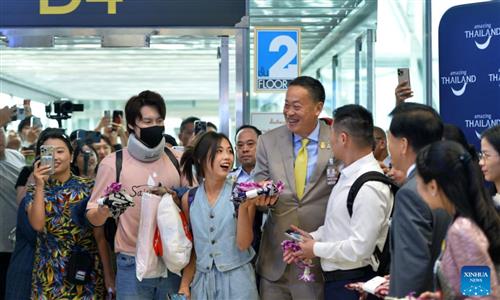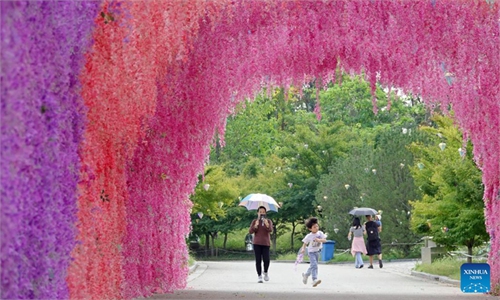Chinese airports sustain high inbound and outbound tourism, boosting holiday travel

Photo:VCG
Chinese airports have maintained the travel fever since the week-long National Day holidays kicked off, and the visa-free policy, along with frequent flights, continues to boost inbound and outbound travel.Civil aviation passenger volumes have exceeded 2.2 million trips per day for three consecutive days since the holidays began on October 1, according to data from the Ministry of Transport.
Beijing Daxing International Airport is expected to handle 146,900 inbound and outbound passenger trips on Friday, with over 1 million trips anticipated throughout the holidays, according to airport data.
The two airports in Shanghai are expected to transport nearly 370,000 passenger trips per day on average, an increase of 14.4 percent compared to the same period last year.
The travel boom is not limited to first-tier cities. During the National Day holidays, the number of inbound and outbound passengers at Harbin Taiping International Airport is expected to reach 14,000, with the number of inbound and outbound passenger flights totaling 100, an increase of 41.9 percent and 1.1 percent year-on-year respectively.
Outbound air tickets and hotel bookings for the National Day holidays have spanned 1,597 cities in 144 countries and regions, data from the travel platform qunar.com showed. When examining the cities with the highest number of outbound air ticket orders, it's notable that all of them are within a 5-hour flight radius. The top five cities are Hong Kong, Bangkok, Kuala Lumpur, Seoul, and Osaka.
Hong Kong and Macao remain highly appealing. The Immigration Department of the Hong Kong Special Administrative Region estimates that about 10.03 million people will pass through Hong Kong's sea, land and air control points from September 28 to October 7.
Thanks to the 144-hour visa-free policy, inbound tourism has grown rapidly. Traditional domestic tourist cities such as Guangzhou, Xi'an, and Zhangjiajie have continuously added new international routes, attracting a large number of foreign tourists to China.
The source of inbound tourists to Zhangjiajie, which bears a striking resemblance to the landscapes depicted in James Cameron's film Avatar, located in Central China's Hunan Province, has increased from 133 countries and regions in 2019 to 171 now.
Meanwhile, cruise travel is also playing a significant role in outbound travel.
Da Wang, a Beijing-based tourist, chose a seven-day cruise tour to the cities of Japan. She told the Global Times on Friday that she was surprised to see at least 40 buses leaving the Fukuoka port in Japan when she disembarked at her first stop on Thursday. Each bus was full of 50 Chinese travelers, and there were many tour guides holding signs waiting for the Chinese tourists, Da said, noting that "it is quite spectacular."
Experts believe that the booming inbound and outbound tourism reflects the strong pulse of the holiday economy. They assert that this trend will further drive economic development, and as people's demand for travel experiences continues to grow, the future holiday economy is likely to become more diversified and enriched.
Global Times



